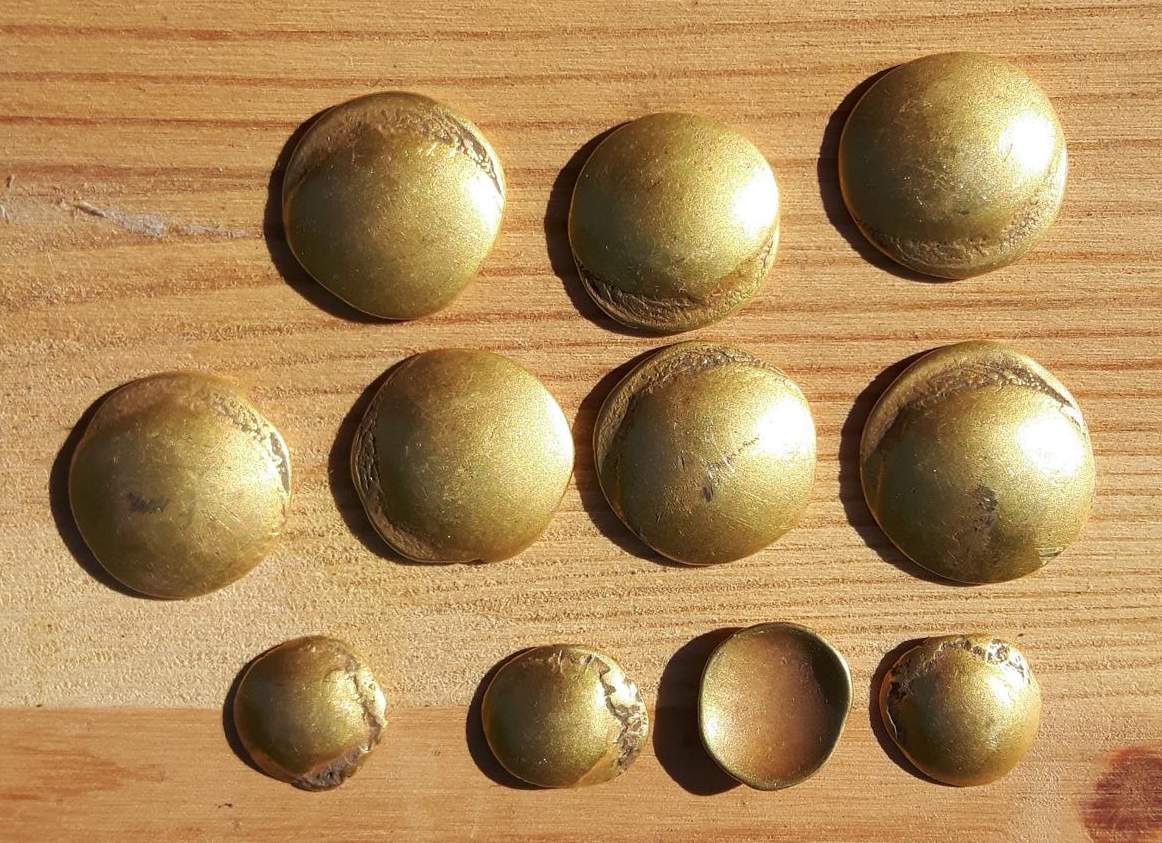An important and extremely rare discovery in Germany, near the village of Baitz (population 186), 80 km west of Berlin: forty-one gold coins of Celtic origin have been found, considered by archaeologists to be extraordinary mainly for two reasons. First, the Celts never lived in Brandenburg. Second, these are coins that are more than two thousand years old and allow us to shed further light on life in Iron Age Europe. The find was within a settlement of the early Germanic Jastorf culture, an archaeological culture that was widespread in what is now Iron Age northern Germany and lasted from the sixth to the first century B.C., evolving from the earlier Scandinavian Bronze Age (the name comes from the village of Jastorf in Lower Saxony, where the first finds were made). According to archaeologists’ impressions, the discovery may lead us to believe that contacts of Celtic peoples were more widespread than previously thought.
The find dates back four years, although the news was only released last week by Brandenburg state authorities. Author of the discovery is Wolfgang Herkt, who works as a Bodendenkmalpfleger (these are volunteers who monitor monuments in support of conservation agencies), and who was doing some metal detector searches and came across the gold coins in a field near Baitz. The discovery was immediately reported to the Landesamt für Denkmalpflege, the conservation agency, which initiated an excavation: Herkt discovered the first eleven coins, while the other thirty were found during excavation activities. The Celts had begun minting gold coins around 300 B.C., and those found near Baitz are of the type known as “Regenbogenschüsselchen,” or literally “rainbow bowls,” found largely in Hungary, Austria, and southern Germany, but never in the north of the country. These were concave-shaped objects (hence the name by which they are known) that have the appearance of coins, but we do not know whether they were actually used for economic transactions (they have often been found at burial sites or votive depositions and thus were likely used for ritual purposes).
The coins found in Baitz have been dated by numismatist Marjanko Pilekić to between 120 and 30 B.C., but it is not known how they came to this area. According to Pilekić, they would have been minted in Hessen or Rhineland-Palatinate (where the presence of the Celts is also attested by finds of this type), and came to this area probably as a result of trade. Probably, given their excellent condition, they did not pass through many hands. It is now likely that Baitz’s Regenbogenschüsselchen will be put on public display: an exhibition is being planned for spring 2022 at the Brandenburg State Archaeological Museum, which is based in the city of Brandenburg an der Havel.
“Celtic gold had not yet been found in Brandenburg,” pointed out Manja Schule, Brandenburg’s culture minister. “The 41 gold coins that have now been discovered are a sensational and irreplaceable source of information. It was a volunteer who opened this important piece of national history. The Bodendenkmalpfleger are important for understanding the past and that is precisely why they are so future-oriented. In total, there are more than 50,000 archaeological sites and nearly 12,000 archaeological monuments throughout the country. They are an important part of our cultural history, our identity, and our tradition. Since 1992, the state has honored the exemplary and exemplary efforts of the Bodendenkmalpfleger with the Brandenburg Monument Preservation Award. Additional positions in the State Bureau for the Preservation of Monuments (BLDAM) and the State Archaeological Museum underscore our support. Because the find shows once again that there are significant historical traces in the state of Brandenburg. And that it is the BLDAM archaeologists who voluntarily or permanently safeguard our historical and cultural heritage.”
“The discovery of the Celtic gold coins,” highlighted Franz Schopper, BLDAM archaeologist, “shows once again the importance and success of the cooperation between state archaeology and the volunteers who support our work with great personal commitment.”
“This find,” explained numismatist Marjanko Pilekić, “is not only the second largest Regenbogenschüsselchen treasure of its kind and by far the largest find of Celtic coins in Brandenburg, but its find is also far from the actual area of distribution. So the interpretation of this discovery has many challenges in store.”
“This is an exceptional discovery that you probably only make once in a lifetime,” said Wolfgang Herkt, author of the discovery. “It’s a great feeling to be able to contribute to research on the country’s history with a find like this.”
In Wolfgang Herkt’s photo, the first 11 coins
 |
| Major discovery in northern Germany: volunteer finds treasure trove of Celtic gold coins |
Warning: the translation into English of the original Italian article was created using automatic tools. We undertake to review all articles, but we do not guarantee the total absence of inaccuracies in the translation due to the program. You can find the original by clicking on the ITA button. If you find any mistake,please contact us.